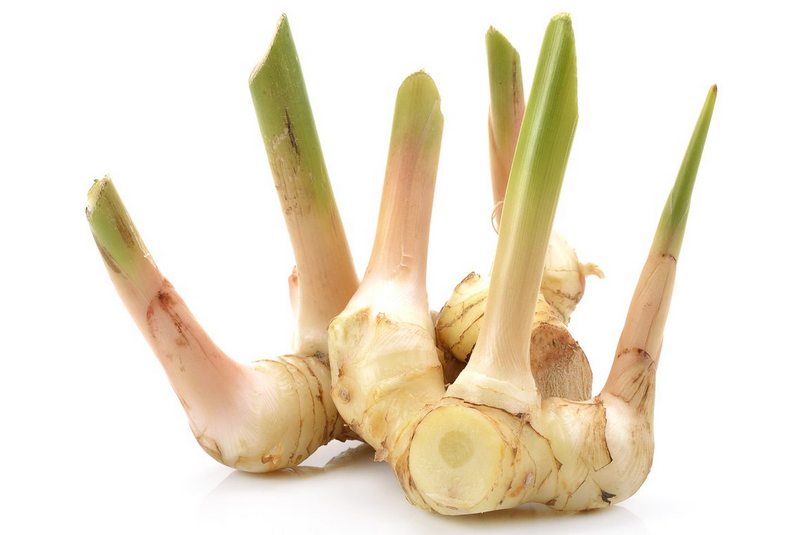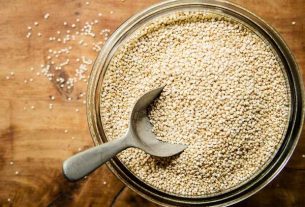It has become a normal thing for humans to purchase more food items than they can eat, most especially when they are not sure of the amount they need. One of the ingredients we tend to buy in excess is galangal and as a result, leaving us with a lot of leftovers. The only thing you can do in this situation is to find out what you can do with the leftovers so that it will not lead to wastage.
The main question is whether or not you can freeze galangal. Galangal can be frozen and the process is possible if the peel is still intact before your freeze it. You also need to ensure that the galangal is well cleaned before placing it inside the freezer. What we will check out in this article is to find out how you can freeze galangal to make the freshness last for a long time. We will also check out some other options for storing it.
What is Galangal?
As pronounced, galangal is a plant grown in the tropical area that has a close relation to ginger. It looks similar to ginger which is its cousin and it is also used in several ways like it. Galangal has bright long wide green leaves with beautiful crimson white flowers that generate brightly-colored red berries. The portion of galangal usually eaten is its root.
The color of the root varies from yellow and white to red and pink. The skin is thick and woody and the edible area is the much lightly colored root. When you consider spices and herbs, galangal is not especially mainstream, however, it has a lot of incredible health benefits. The root is most popularly used in Indian and Thai dishes much as a fragrant and potent additive to help spice fish and curry dishes. You can also use galangal in a tasty therapeutic tea which is wonderfully warming and soothing.
Galangal: Health Benefits
You can consider galangal as a root vegetable that is aromatic and richly packed with healthy goodness. Its popularity has started to grow and there are different studies ongoing concerning this spice, on its numerous uses as well as benefits which is seen whether it is the oil form, raw or powdered.
Naturally, galangal is a stimulant that helps to lower nausea as a result of vertigo, the flu, pregnancy, motion sickness, and other illnesses. It has certain properties of anti-inflammation that help alleviate several symptoms associated with chronic diseases. It is most especially useful to help fight rheumatoid arthritis. This wonderful root also helps to calm your stomach by relieving various aches in the gut and also help to reduce gas. It is also used by different people as a deodorizer (all-natural) because it helps to change and absorb scent odor on the human body.
Galangal has a lot of antioxidants used to support the detoxification of the entire body. It helps to clean the organs and blood of environmental toxins that are very harmful as well as unhealthy food. Galangal also has antifungal and antimicrobial properties that make it very effective to prevent several foodborne illnesses such as salmonella, listeria, E. coli, and staphylococci.
According to some other researches, the root has been shown to help improve the growth of hair and also treat scalp problems like flaking and dryness. It also helps with several skin conditions such as small wounds, acne, and minor burns. It has been suggested in other researches that galangal added to man’s diet could help with motility, fertility, and raising of sperm count. Some other studies have shown that it helps to fight against some kinds of cancer by reducing debilitating and extensive treatments.
How to Freeze Galangal
Galangal can simply be thrown into your freezer haphazardly but you can make sure the freshness is maximal when you follow some extra steps. One important thing you must ensure when you are preparing for freezing galangal is to ensure the peel is still intact. This will help preserve the health benefits and flavor.
The roots should also be thoroughly washed in fresh, cool, clean water. This can be done by rubbing the debris, dirt, and any other tiny bugs gently inside a bucket or bowl. Alternatively, place your galangal inside a strainer or colander and it should be held under running water. Rotate the pieces to ensure it is nicely cleaned. The water on the galangal should then be drained and patted very gently until it is dry. Ensure the outer layer is not rubbed off.
Freezing Galangal in Portion Sizes
You may slice your galangal into portions with the meals you might want to take it with in the future already in your mind. It could be only for yourself, for the family, or to be added to tea. You could also grate it before freezing. All you need is to grate it and then proceed to portion it by using airtight containers, plastic wrap, or freeze bags.
If you toss your pieces of galangal inside a large bag or container and then place them inside the freezer, you run a risk of them sticking all together immediately they become frozen and this will only lead you to fight with them whenever you want to use them. What you should do instead is to portion them individually and store different to avoid struggles in the future and also preventing you from thawing more than you will need.
Frozen galangal is likely not to lead to crystals and freezer burn when you use a quality plastic wrap to individually wrap them. You will easily do this by separating the portions on an ice cube plate until they are completely frozen. Then, you will wrap each of the pieces inside a plastic wrap of high quality. You may also use separate freezable Ziploc bags or freezing containers.
It will make sense to label the containers for identification later. The containers should be placed very far from the freezer door to prevent fluctuations in temperature. If you do it properly, your galangal will last for about 3 to 9 months inside the freezer. Ensure you also add your current date and the best before date on the labels of the containers.

How to Thaw Galangal from Frozen
Food items usually lose some firmness when you defrost them from frozen, whether they are berries, vegetables, or fruits. This is the same for root spices and vegetables. Galangal will thaw within twenty minutes after taking out of the freezer. The best period to grate your galangal is immediately you remove it from your freezer if that is how you want to use it in your dish.
After your galangal has used about 5 to 10 minutes at room temperature on your counter, it would have gotten to the correct consistency you can use to peel. Use a spoon to peel it instead of a knife. The frozen galangal that is well sealed can also be placed inside a bowl of water to help enhance the process of defrosting.
The root may appear slimy, soft, or mushy when it has fully thawed but you can still take it. Almost all produce appear to wilt and look like it has gone instantly bad due to the change in the behavior of molecules as a result of frozen moisture on the food.
Other Options for Storing Galangal
You can store fresh galangal inside the fridge for about 3 weeks if you store properly. You should first clean it to ensure that there is no dirt on it before you put it inside the fridge. Use a damp, clean food cloth to wrap it, and then use plastic wrap to wrap the entire thing or perhaps, put it inside an air-tight container or bag. If you will use the galangal within one or two days, skip the stage of a damp cloth, just use an air-tight container or plastic wrap. Place it inside the refrigerator where you are sure the temperature won’t fluctuate too much. Add the date and label it before you place it inside the fridge so that you will know when you should use it.
How to Use Galangal
Sliced or diced galangal can be added to hearty pasta sauces, stew, or stir-fry. Galangal is a little more potent as compared to ginger and some other spices, you need to carefully add to taste. Sliced and grated galangal is commonly added to Asian soups that have coconut milk as the base. You can steep it for teas for different ailments such as halitosis, heartburn, or gas buildup.
If you want to prevent indigestion, you can add galangal and alcohol to make a tincture that is very powerful. Galangal wine can be made by cooking galangal roots with white wine. You will strain and then serve it warm to enjoy it.
Related Questions
What Does Tom Kha Mean?
This is a soup or broth whose main ingredient is galangal. The meaning of Kha is galangal. Tom Kha Gai refers to a very delicious soup that is made using galangal, chicken, and coconut milk as the base. Different vegetables are then added for it to be complete.
Are Galangal and Turmeric the Same Thing?
Both turmeric and galangal are roots or rhizomes with numerous health benefits and distinct flavors. They are different plants. Turmeric is usually used in powdered form for curry dishes. The yellow color is distinct and it adds dye to stuff like fabrics, cosmetics, and delicious food.
Is There a Difference Between Galangal and Ginger?
Ginger and galangal have close relations but they are different plants. The root of galangal is larger than that of ginger and the taste is also stronger and the fragrance is more robust. Some other roots are something like maca that is taken in the powder form.


